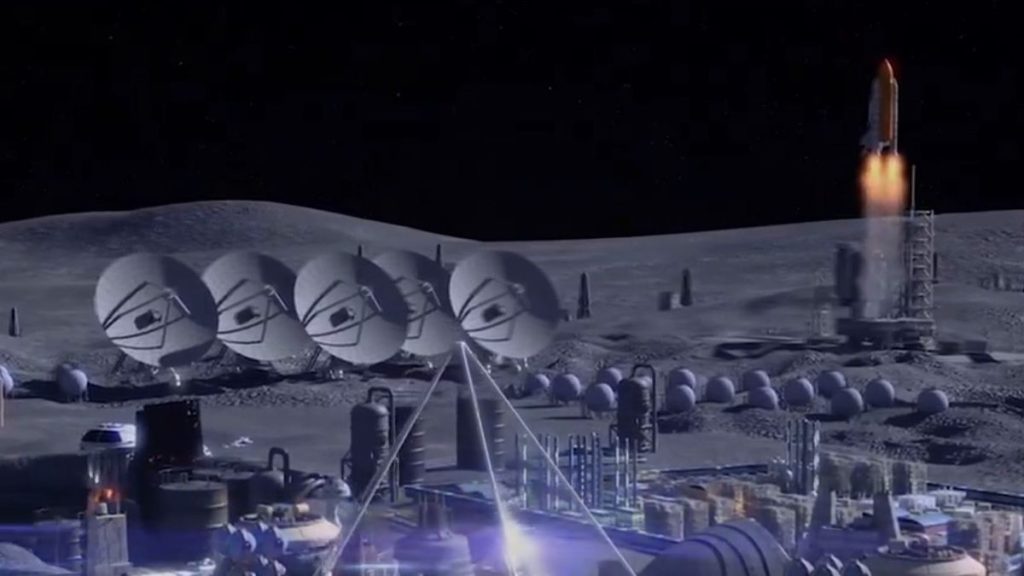MILAN — After collecting the first-ever samples from the far side of the moon, China is now setting its sights on even more distant destinations — Mars, asteroids and Jupiter, positioning itself as a key player in space exploration for the coming decade.
The country’s plans span the moon, near-Earth asteroids, comets, obtaining the first-ever samples from Mars and a mission to the Jupiter system in the next few years, according to top Chinese space officials.
The first look at the Chang’e 6 lunar far side samples — delivered to Earth in June— reveals these are lighter in color and lower in density than samples collected from the near side by Chang’e 5 in 2020, among other differences, according to Guan Feng, director of the Lunar Exploration and Space Engineering Center (LESEC) at CNSA, speaking during a session at the 2024 International Astronautical Congress here on Tuesday (Oct. 15).
These differences provide critical insights into the moon’s geologic history and offer clues about the far side’s unique characteristics, potentially informing future lunar exploration. But while detailed research and analysis of the new samples is just getting underway, China is already preparing a return to the moon and visits to interplanetary destinations.
Related: China’s Chang’e 6 mission carried a stone flag to the moon’s far side
Li Guoping, CNSA’s chief engineer, stated that next year China is on target to launch the Tianwen 2 mission to sample the near-Earth asteroid Kamo’oalewa. The spacecraft will deliver samples to Earth and then head off on an extended journey to study a main-belt comet.
China’s next two lunar missions will follow in 2026 and 2028, Li said. These will be Chang’e 7 and Chang’e 8, respectively. Both will attempt to land near the lunar south pole. The first will hunt for water ice in permanently shadowed craters, while the second will carry in-situ resource utilization (ISRU) and terrestrial ecosystem experiments.
The pair will be precursors to an International Lunar Research Station (ILRS), to be constructed with input from partners in the 2030s. China is actively seeking partners for the venture and has so far attracted more than 10 countries to its cause.
China is also preparing to take its lunar-sampling capabilities to the Red Planet. CNSA is gearing up for an audacious bid to collect material from Mars using a two-launch architecture. Named Tianwen 3, the mission will see separate service and reentry module and Mars landing and ascent spacecraft stacks launch in 2028, aiming to deliver samples to Earth around 2031. The main aim is seeking evidence of past or present Mars life, according to scientists.
The mission seems likely to attempt to collect Mars samples and deliver them to Earth before NASA’s own Mars Sample Return efforts. That project is currently in doubt, with NASA seeking new proposals to cut costs and accelerate the timeline.
Additionally, Li Guoping, speaking through an interpreter, said there is 55 pounds (25 kilograms) of payload space on the Tianwen 3 orbiter for international cooperation, and another 11 pounds (5 kg) available on the surface spacecraft.
“We sincerely welcome participation from international space agencies, research institutions and education institutions,” Li said.
China’s efforts at international space cooperation don’t end there. Guan revealed that more than 30 applications have been made in response to a call of opportunity to participate in Chang’e 8. These applications are currently in the review and selection phase, Guan said.
Li also stated China will open a second round of international applications for accessing the Chang’e 5 nearside samples for research.
Around 2030, China will launch its first mission beyond the asteroid belt. Tianwen 4 will send a spacecraft to Jupiter, Li said. The mission will survey the Jupiter system before orbiting the Galilean moon Callisto. It could also include a spacecraft that will separately make a flyby of Uranus, according to earlier reports. Li also noted that a planetary defense mission is planned for the coming years.
Another mission expected to launch in the coming years is an asteroid-deflection test, attempting to demonstrate a kinetic impactor similar to NASA’s DART mission.
The above missions will be robotic. But China is also planning a crewed effort, the most complex and challenging mission it has ever attempted: The country aims to land astronauts on the moon before 2030.
Meanwhile, NASA is working on efforts to return its astronauts to the moon with Artemis 3. Further delays to the mission, currently scheduled for late 2026, could raise questions about which country — the United States or China — lands on the moon for the first time in the 21st century.

